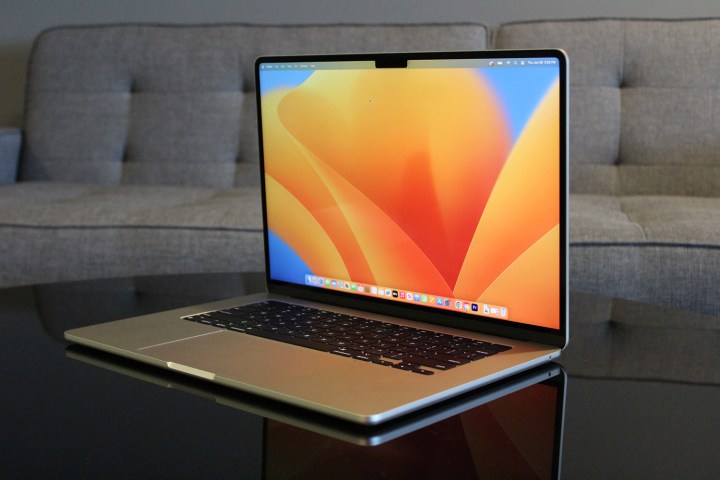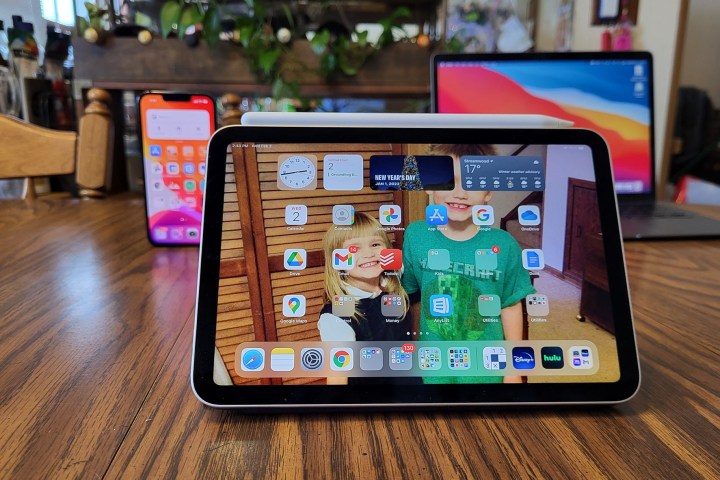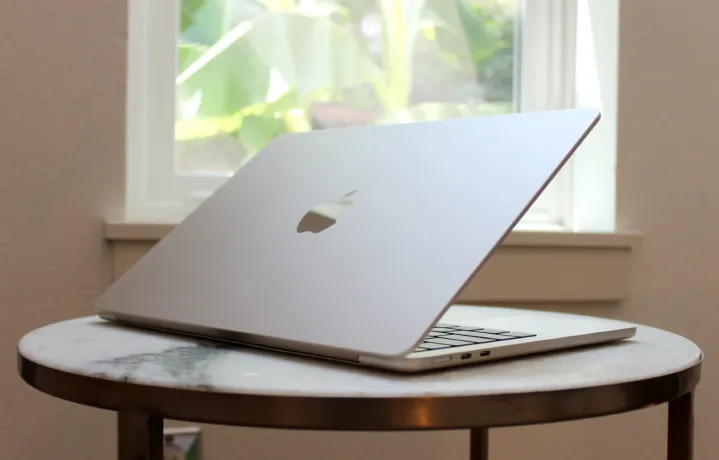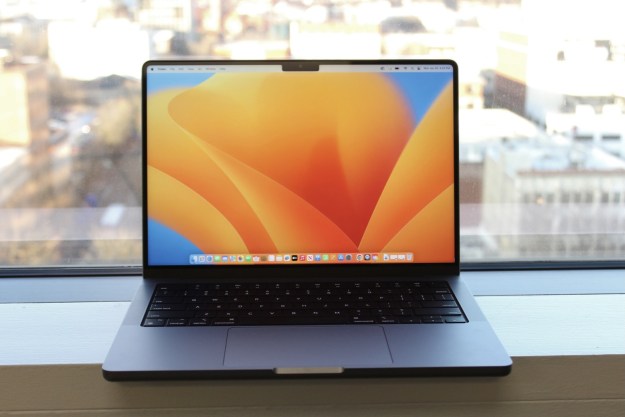You might assume that the iPad Pro and the MacBook Air are worlds apart, but they’re actually pretty similar devices when you think about it. Both are built for portability, come in two display sizes, and cost roughly the same. Picking between them is trickier than it first looks.
We’ve put together this guide to help you choose the right device, no matter your budget or use case. Whether you prioritize performance, portability, display, software, or something else, you should feel much more confident in your decision by the end of this article.
Price

The iPad Pro comes in 11-inch and 12.9-inch sizes, starting at $799 and $1,099, respectively. The latter can be ramped all the way up to $2,399 if you pick cellular connectivity and the maximum 2TB of storage. The Apple Pencil ranges from $79 to $129, while if you want to make the iPad Pro more laptop-like, Apple’s Magic Keyboard with trackpad starts at $299.
The MacBook Air, meanwhile, is a little more complex, as Apple currently sells three models. There’s the 13-inch MacBook Air with an M1 chip, which costs $999, and another 13-inch model that comes with the M2 chip instead. That one starts at $1,099. Meanwhile, the 15-inch model with M2 chip begins at $1,299. The most you’ll pay for a MacBook Air is $2,499 — that’s the 15-inch version with 24GB of memory and a 2TB SSD.
Prices between the iPad Pro and MacBook Air are very similar, so there’s no clear winner here.
Winner: Tie
Performance

Determining whether the iPad Pro or MacBook Air offers better performance is not entirely straightforward because of the MacBook Air’s two different chip options. The entry-level model comes with the M1, while the more recent 13-inch and 15-inch versions have the M2. Every iPad Pro comes with the M2 as well.
That means the M1 MacBook Air is at a disadvantage. The M1 is an excellent chip, but there’s not much reason to go for that model when the M2 MacBook Air only costs $100 more.
Leaving the M1 aside, will the M2 iPad Pro or M2 MacBook Air get better performance? In the end, you should get roughly the same output in either case. Neither the iPad Pro nor the MacBook Air have a fan to cool them down and boost performance, and Apple’s M2 chip is powerful enough to handle most tasks you can throw at it (beyond very demanding workloads like high-resolution video rendering or heavy-duty gaming).
Winner: All M2 models (iPad and MacBook)
Design

Despite one product being a tablet and the other a laptop, they can be made to have very similar designs. That’s because the iPad Pro can be outfitted with a keyboard, either Apple’s Magic Keyboard or one from another company, which turns it into a laptop (of sorts). Just be aware that Apple’s keyboard cases are expensive, with the Magic Keyboard setting you back $299.
We prefer the MacBook Air in this situation. It has a more spacious keyboard (especially compared to the 11-inch iPad Pro) and its trackpad is more generously sized. You get the same typing feel on both devices but a little more room to move on the MacBook.
Elsewhere, both the iPad Pro and MacBook Air come with high-quality aluminum chassis, which are rock-solid and feel sumptuously premium. The iPad Pro comes in either space gray or silver colors. You get a bit more choice with the MacBook Air, which is available in midnight, starlight, space gray, and silver for the M2 models, and space gray, gold, and silver for the M1 version.
As for ports, you get a single Thunderbolt 4 slot in every model of the iPad Pro. The M1 MacBook Air has two Thunderbolt 4 ports, while the M2 versions both come with two Thunderbolt 4 slots and a MagSafe charging connector. That gives them more flexibility and expansion options compared to the iPad Pro.
Winner: MacBook Air
Displays

Here’s where things get a bit more complicated, as there are many variations in size and capabilities across both the iPad Pro and MacBook Air.
We’ll start with the iPad. The 11-inch model comes with an LED-backlit display with a 2388×1668 pixel resolution that can hit a maximum of 600 nits of brightness. It supports Apple’s ProMotion variable refresh rate, the P3 wide color gamut, and True Tone adaptive colors.
The 12.9-inch model is a serious step up from its smaller sibling, as it uses a mini-LED display. That brings much higher brightness — up to 1,600 nits when viewing HDR content — and 2,596 individual dimming zones for vastly improved backlighting. It also has the same support for ProMotion, P3 gamut, and True Tone, plus a 2732 x 2048 resolution.

How does the MacBook Air stack up? That depends on the model. Some aspects are similar across the models: the M1 13-inch MacBook Air has a 2560 x 1600 resolution versus the 2560 x 1664 in the M2 version. The key difference here, though, is that the M2 version’s brightness hits 500 nits, outstripping the 400 nits of the M1 MacBook Air.
When you step up to the 15-inch model, the most significant change is, unsurprisingly, the resolution, which stands at 2880 x 1864 pixels. The brightness still tops out at 500 nits, though. Yet it might be your best option if you’re looking for a large, expansive display.
Every MacBook Air supports the P3 wide color gamut and True Tone. However, none come with ProMotion, which is a point in the iPad Pro’s favor. The iPad Pro also wins here thanks to its superb mini-LED display tech. While we’re sure you’ll be very happy with the MacBook Air’s display, it’s lacking this key differentiator.
Winner: iPad Pro
Battery life and portability

Ever since Apple started outfitting its Macs with M-series chips, battery life has gone through the roof. Apple says the MacBook Air will get you 15 hours of web browsing and 18 hours of Apple TV playback, no matter which model you pick. In our review of the M2 13-inch MacBook Air, we got even more than that: 18 hours of web browsing and 21 hours of video. The 15-inch MacBook Air also beat Apple’s estimates in our review.
The iPad Pro can’t match those numbers, with Apple saying you’ll get 10 hours of battery out of it. It fell short in our testing, though, after a day of mixed web browsing and video watching.
Where the iPad Pro pulls things back is with its low weight. The 11-inch iPad Pro weighs around 1 pound, while the 12.9-inch version is about 1.5 pounds. The 13-inch MacBook Air is 2.8 pounds with the M1 chip and 2.7 pounds with the M2, while the 15-inch edition weighs in at 3.3 pounds. The MacBook Air might be Apple’s lightest laptop, but it’s still plenty heavier than the iPad Pro.
Winner: Tie
Software

Both macOS and iPadOS are very capable operating systems, and iPadOS is a long way from the iOS spinoff it started out as. In iPadOS 17, you get a ton of features that will help you work and play better, including Stage Manager, improved widgets, FaceTime video reactions, and more.
But macOS wins out here. The macOS Sonoma update from summer 2023 wasn’t the biggest upgrade ever, but it brought a bunch of handy new features to the Mac operating system. It’s still loaded with features that are sorely missing on the iPad, from better window organization to superior file management.
Just as important is app compatibility. The MacBook Air can run thousands of iPad apps and games without a hitch, and you can just download them from the App Store and get going. Yet it doesn’t always go both ways, as some Mac apps and games are inaccessible if you have an iPad.
Winner: MacBook Air
Other features

There are a few other things to consider between the iPad Pro and the MacBook Air. The first is that the iPad Pro can be kitted out with an Apple Pencil, which is well-suited for digital painting and writing notes. Although you can use an iPad as a second screen for a MacBook Air (meaning you can essentially draw on your Mac), you need an iPad for this to work — the Apple Pencil won’t work with a Mac without an iPad intermediary.
The second consideration concerns security and logging in. The MacBook Air uses Touch ID, which is located in the top-right corner of its keyboard. The iPad Pro, however, uses the more secure Face ID for facial recognition. It’s not only more convenient but is even safer than Touch ID. While Face ID is rumored to be coming to the Mac eventually, it’s not here yet.
Winner: iPad Pro
Which one should you buy?

The comparison between the iPad Pro and MacBook Air is an extremely close-run thing, and there’s no clear winner. Depending on your circumstances, you might prefer one device over the other.
For instance, the iPad Pro has a much better display (if you pick the 12.9-inch model) and comes with great extras like Face ID and the Apple Pencil. If you enjoy digital drawing or want a small, compact device that can expand into a miniature laptop with the addition of a keyboard, it will be a great choice.
The MacBook Air has plenty of its own strengths, though. Its battery life is out of this world, at times offering double what the iPad Pro can manage, while its extra ports and powerful software make it more capable in a wider range of situations. It’s a brilliant laptop that you won’t regret buying.
Really, then, it all comes down to what you intend to use the device for. Think carefully about that, and you’ll have your answer. Either way, both products are at the top of their game, so you’ll be happy whichever you pick.
Editors' Recommendations
- Save $200 on the one-month-old 14-inch MacBook Pro with M3
- Best Buy still has the MacBook Air M1 at its Black Friday price
- M2 MacBook Air vs. M1 MacBook Air: things have changed
- Best MacBook deals: Get an Air for $750 and save on M3 MacBook Pro
- I’m finally ready to stop recommending Apple’s cheapest MacBook




